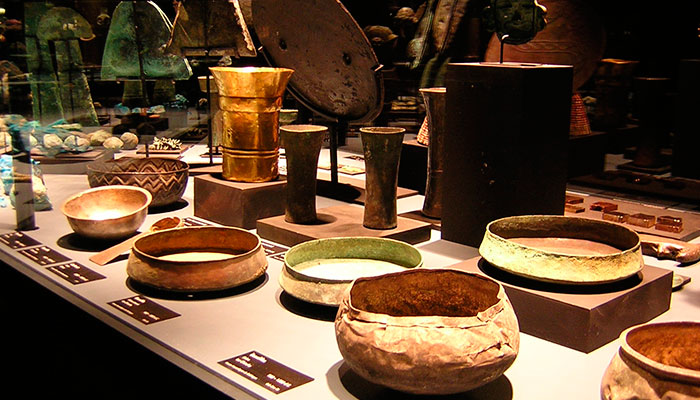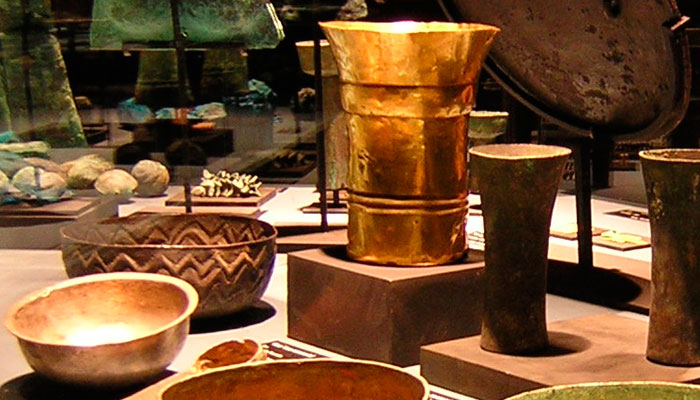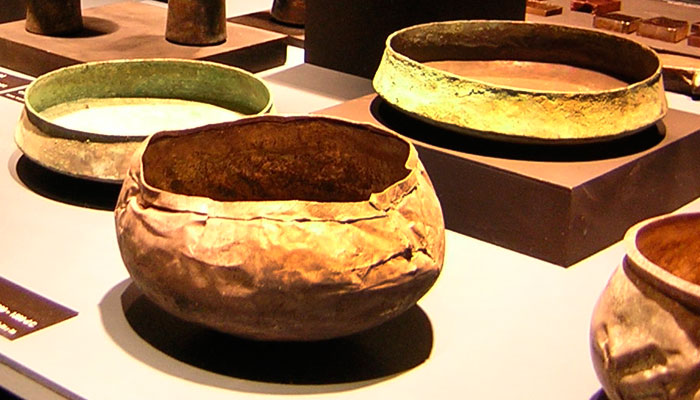The Art of Copper in the Andean World – 2004
- From stone to jewel
- Metal tools
- Chromatic palette of copper
- Metallic sounds and glitters
- Bronze bells
- Metals for taking away life
- Copper on the shaman’s altar
- Copper in the andean iconography
- Metallic bodies
- The face of death
- Food for men
- Food for the gods
- The power of the cailles
- Epilogue
- Galería de fotos
Food for men
Eating and drinking were important activities in rituals and festivities. During the ceremonies, the seating, eating drinking and speaking order was doubtlessly hierarchical, as was the social status and rank of the individuals, reflected in the materials and quality of the artifacvts used. Lower class individuals used simple gourd or pottery vessels, while the finest and most elaborate recipients, especially those made of silver and gold or of copper alloys, were reserved for those with a higher social position.
The kero was one of the most traditional vessels used for ritual drinks in the Andes. It was also a symbol of power and authority within Andean societies. There were ceramic and wooden ones but the most flamboyant of them were made of gold and silver in Tiwanaku, Wari and Inka empires, and the Chimú kingdom. Their political and religious authorities used these beakers in banquet ceremonies that were organized in return for collective loans of work from the subject communities of these states. According to the Spanish chronicles, the Inka nobles used pairs of keros in these ceremonies to drink corn chicha with the local elite and to seal alliances. One of them was used by the principal authority, the other was offered to the local ethnic chief or lord who was being entertained. Given the high prestige awarded to metal objects, the gold and silver keros were probably owned and used by very important individuals, signaling the power, status and social inequalities that were so institutionalized in these empirer.






































